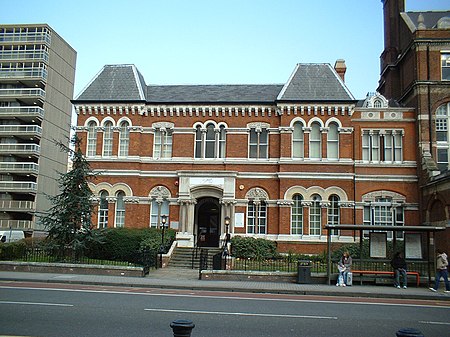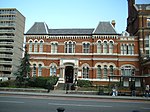Metropolitan Borough of Southwark
1900 establishments in the United Kingdom1965 disestablishments in the United KingdomDistricts abolished by the London Government Act 1963History of the London Borough of SouthwarkMetropolitan boroughs of the County of London ... and 1 more
Use British English from February 2019

The Metropolitan Borough of Southwark (Br [ˈsʌðɨk]) was a metropolitan borough in the County of London from 1900 to 1965. It was created to cover the western section of the ancient borough of Southwark and the parish of Newington. In common with the rest of inner London, the borough experienced a steady decline in population throughout its existence. The borough council made an unsuccessful attempt to gain city status in 1955. Its former area is now the northwestern part of the current London Borough of Southwark.
Excerpt from the Wikipedia article Metropolitan Borough of Southwark (License: CC BY-SA 3.0, Authors, Images).Metropolitan Borough of Southwark
Walworth Road, London Elephant and Castle (London Borough of Southwark)
Geographical coordinates (GPS) Address Nearby Places Show on map
Geographical coordinates (GPS)
| Latitude | Longitude |
|---|---|
| N 51.4908 ° | E -0.097 ° |
Address
Newington Library
Walworth Road 155
SE17 1RS London, Elephant and Castle (London Borough of Southwark)
England, United Kingdom
Open on Google Maps









